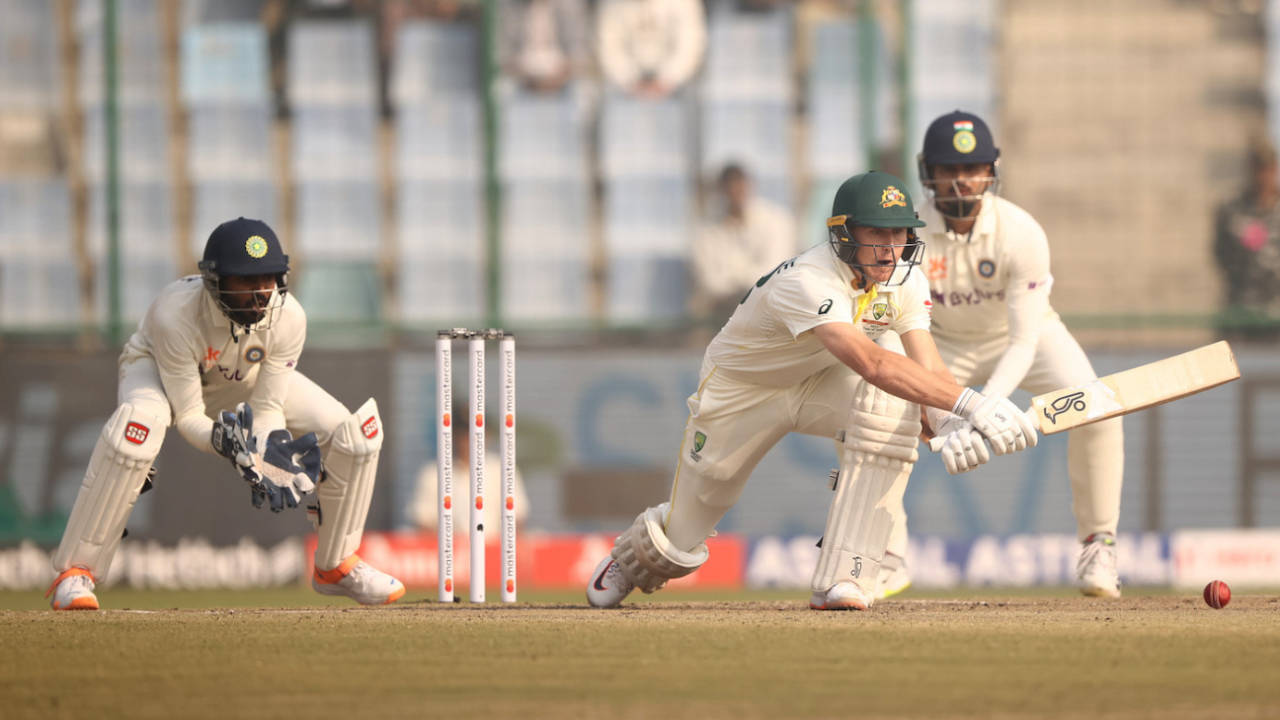My perception of playing good spin bowling in India is ancient, based on experiences from more than five decades ago.
Can those principles still work? If they are followed, and complemented by a common-sense approach, then bloody oath, they can.
You have to learn good footwork - coming three paces out of your crease or retreating quickly onto the back foot - at a young age. You don't discover how to play good spin bowling later in life on a scarified Australian pitch just prior to a vital tour of India.
I was taught (not in the metric era): "If you're stumped, make it by three yards not three inches." This was wonderful advice, followed by: "Don't consider the wicketkeeper, because if you do, you're thinking about missing the ball."
Armed with those suggestions and years of on-the-job training in all forms of cricket, I trusted my defence in India. If you don't, as the current Australian team has demonstrated, you can easily be panicked into playing a rash shot.
A successful player needs to quickly work out how to survive the first ten minutes on a typical Indian pitch that encourages spin, and hope he enjoys a share of luck. If he plays sensibly, like
Rohit Sharma has admirably shown during the series, batting isn't impossible on testing Indian pitches.
Sweeping regularly is not the answer to playing good spin bowling, and anyone who says so is talking through his hat. The odd player is very good at sweeping and should utilise the shot, but for the majority there are better ways.
Fielding captains must involve danger in playing the sweep shot. You do so by placing catching men at 45 degrees behind square leg and at backward point, where mistimed sweep shots generally fall. Captains must be brave and favour the catching option rather than placing boundary-saving fielders for well hit sweep shots. Any good spin bowler who makes the ball bounce is likely to expose the dangers in sweeping constantly.
It should have been obvious in Australia's build-up what kinds of batting strategies needed to be used in India. The most beneficial are to watch the ball closely, more so than in Australia, and that there is a fraction more time than you think.
Selectors can be fooled into thinking that playing spin bowling well in Australia automatically means success will follow on Indian pitches
Once a batter understands about the extra time on slightly slower Indian pitches, he can work the ball into a gap to collect precious runs. Those runs, especially early in an innings, when survival is treacherous, can frustrate even the best spinners.
Selectors can be fooled into thinking that playing spin bowling well in Australia automatically means success will follow on Indian pitches. That isn't so but if the method in Australia is a sound one, selectors should assume it could lead to success in India.
Australia's selection on this tour has been awfully inconsistent and at times irrational. Getting selection right makes for an air of calm, which, along with effectively putting a stop to dressing-room tantrums, can aid team spirit.
Successful players from the 1970s were accused of preaching "old-time cricket," at the Australian Academy following Rod Marsh's departure for England. Old-time it may have been but it was also winning cricket. There are ways to win at the highest level but adding extra layers of management to the system is not one of them. Former great spin bowler Bill O'Reilly once told me: "Coat-minders at junior pick-up games go on to become members of the Australian cricket board."
That statement by O'Reilly was insightful. The number of coaches and hangers-on has increased to a ridiculous point, and the occasionally naive players mislead administrators who have an alarming lack of knowledge about how to win at the highest level.
Like picking a well-balanced cricket team, good administrations should be a sensible combination of playing knowledge at the highest level along with sound business acumen so the game is well managed.
The Australian cricket team is very good at many venues around the cricket world but alarm bells should have rung long ago about the trip to India.
Former Australia captain Ian Chappell is a columnist
